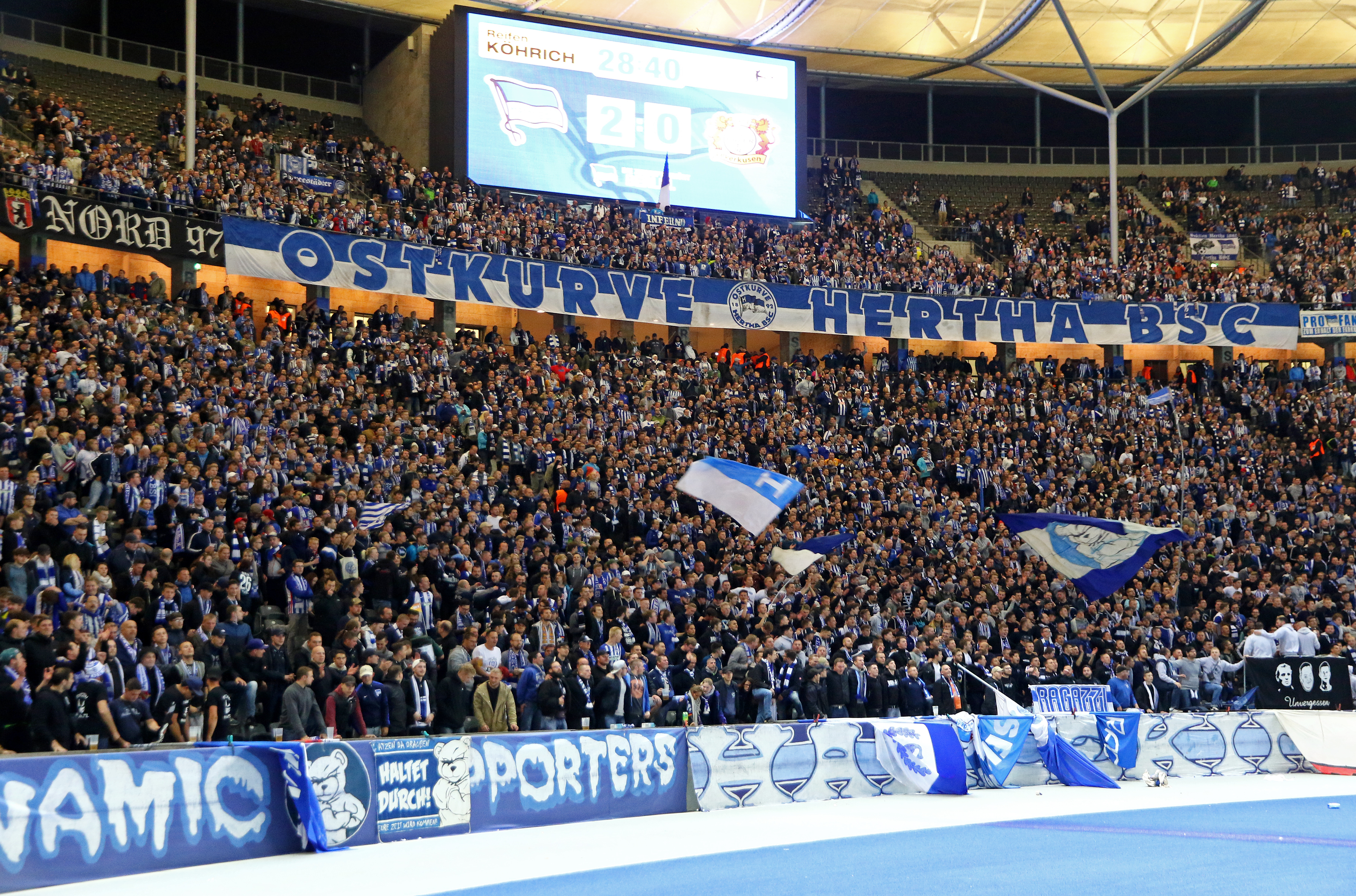
On Saturday, May 16, football returned to our screens, for the first time in two months, as the German Bundesliga kicked off the remainder of the season.
Due to the ongoing pandemic, the games were played behind closed doors. At Borussia Dortmund’s Signal Iduna Park, when the side faced local rivals Schalke, the Yellow Wall was missing. While some say football's return is a return to some normalcy, others argue the sport isn’t the same.
Where Is Football Resuming?
While Germany was the first country to relaunch its flagship leagues, other major leagues followed suit in quick succession.
In Spain, players returned to training on May 17, despite nationwide lockdown restrictions still in place. A week later, on May 24, Javier Tebas, La Liga president, announced a tentative restart date of June 11.
In England, teams began gradually phasing in sessions on Tuesday, May 26. However, the government, the Football Association (FA), and healthcare services have been in a quagmire, and doctors have expressed concerns over safety.
On May 28, the FA announced the season will resume June 17.
A day later, the Italian government greenlit a decision to restart the campaign on June 20.
Meanwhile, France took a different route—suspending the 19/20 season altogether in late April. Earlier that month, the top leagues in Belgium and the Netherlands announced they would be ending the football season too.
However, unlike France and Belgium, where Paris Saint-Germain and Club Brugge were respectively crowned winners, the Netherlands chose against naming a winner for the league titles, or naming teams that would face relegation. In France, the null-and-void approach has led to some teams filing or considering filing lawsuits for damages incurred as a result.
Across the Atlantic, the Major League Soccer (MLS), is weighing up options to carry on with the season.
‘Behind Closed Doors’
Mudit Pillai, a mechanical engineering student at the Karlsruhe Institute of Technology in Germany, watched the game between Dortmund and Schalke.
“As a person who loves football, it was really exciting to finally see a game after so long,” he said.
However, the lack of fans took the emotion away. “Without fans, the game loses its charm and is no longer the same sport,” he added. Pillai, 20, is an ardent supporter of Premier League side Liverpool, who are currently at the summit.
But his time studying in Germany has driven him to watch the occasional Bundesliga game. Pillai, who lives near the PreZero Arena, the home of Bundesliga outfit Hoffenheim, said he briefly caught the tie between Hoffenheim and Hertha Berlin on May 16.
A week later, in their first home game since the season resumed, another Bundesliga side chose a different approach to the debate around crowds—12,000 fan cutouts.
Welcome to BORUSSIA-PARK!
Today's fans have already taken their seats #GladToBeBach #BMGB04 pic.twitter.com/xMNG7c8hcU— Gladbach (@borussia_en) May 23, 2020
On May 20, The Sport and Politics Specialist Group (PSA) hosted a webinar on the impact of COVID-19 on the global politics of sports. (Watch the webinar here.)
“Fans are part of the feel-good factor,” Jonathan Grix, a professor of sport policy at the Manchester Metropolitan University, and a panelist at the webinar said.
However, Professor Grix warned against rushed reopenings of [economies and businesses] and the dangers of weak leadership.
Regulations
While crowds at stadiums or at bars and cafes look unlikely to return for now, regulations mean that substitutes and team staff sit six feet apart or more, and everyone not on the pitch wears a mask.
Further, in Germany, the rules are that if a player test positive, games will be postponed, as was the case with a 2. Bundesliga fixture between Hannover 96 and Dynamo Dresden.
In England and in Spain, players and clubs are worried about health risks, and being carriers of the coronavirus themselves. And yet, as football journalist Rory Smith wrote in April “... we are not in an ideal world these days. All we have are unpalatable choices.”
An epidemiologist at Baylor University echoes the sentiment. Between waiting for fans to safely return and carrying on, even without fans, the balance leans toward the latter.
“So, either we start with some level of protection or we never start till we have a vaccine,” said Dr. Giovanni Filardo, an epidemiologist and clinical professor of health services research at Baylor University.
Dr. Filardo warned that while precautions cannot rule out the possibility of players contracting the coronavirus, Germany’s approach might serve as a model for other leagues and sports, like the NFL.
International Stage
While major domestic leagues themselves draw crowds, mega-events such as the Euros and the Olympics typically see even larger numbers. However, even when contests like the Euros resume next year, fan crowds are expected to be smaller due to safety concerns, Dr. Filardo noted.
Amid the coronavirus pandemic, events of this scale pose a unique threat, as a single game in February in Milan, between the Italian side Atalanta and the Spanish team Valencia, was linked to an explosive outbreak in Italy’s Lombardy region.
Due to the ongoing pandemic, both the Champions League and the Europa League, the top continental contests at the European club level have been delayed until August.
Meanwhile, among the international tournaments, both the Euros and this year’s Olympics have been postponed to next year. However, questions remain over rescheduling these mammoth competitions on short notice.
High Stakes
As Japan faces uncertainty over the tournament’s postponement, there is another pressing concern—recession, further raising issues over budgets and funding.
According to analysis by ESPN, the suspension of sports could cost at least $12 billion in revenue. In regards to football specifically, the costs of the COVID-19 pandemic go beyond clubs, leagues, and players, upending the entire economic model.
As Joe Devine, executive producer at Tifo Football explains, the disruption could have knock-on effects for broadcasting fees, player wages, ticket prices, to name a few.
Like businesses in other fields, the financial burden of the coronavirus may yet fall disproportionately on smaller clubs, or local businesses.
Smaller clubs rely on ticket prices and fan support to financially survive. Local businesses situated around stadiums rely on patrons catching a game, or stopping by en route to a match. With the disruption wrought by the COVID-19 pandemic, this system has been hit hard.
“As businesses fail, jobs disappear and the football landscape changes, the question is—who will survive?” asked Stefan Szymanski, a professor of sport management at the University of Michigan. Prof. Szymanski was also a panelist at the PSA webinar.
However, the consequences of this economic instability extend to all sports, he added.
Historical precedents
A century ago, even as the First World War and the 1918 flu epidemic ravaged the globe, football carried on in some form, at least at the domestic level.
The history of both pandemics suggests that policy, communication, and health precautions can play a key role in curbing the spread.
However, there are some differences between the current pandemic and the 1918 pandemic. For one, the 1918 pandemic was more lethal for young adults than COVID-19, and a large number of deaths were of soldiers.
Further, the 1918 pandemic had a higher mortality rate at roughly 2.5 percent, per the National Center for Biotechnology Information (NCBI). According to new estimates by the U.S. Centers for Disease Control and Prevention (CDC), COVID-19 has a mortality rate of 0.4 percent. Still, a lot remains uncertain regarding the novel coronavirus.
A Sense of Hope
Even as sports like football carried on in 1918, stadiums were smaller then, crowds were thinner, and the economic model of the football industry was different. A solution, then, perhaps, can be to rewind to a bygone era, and to limit crowds, Prof. Szymanski suggested.
Further, “sports is entirely scalable,” he added, explaining that when safe to do so, clubs may employ less staff and personnel, and there might be fewer fans in the stadiums [in the short term], but sports will survive.
“It’s really just a shrinking,” he said.
All things considered, the resuming of the beautiful game has been a welcome sight. “As a football fan, these are optimistic times on a rather gloomy day,” Pillai concluded.










